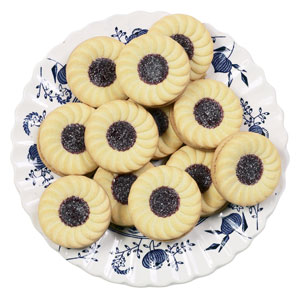January 2015
Americans Are Still Eating Too Many Trans Fats
A slice of apple pie, a tub of popcorn, a bag of cookies. Ever wonder what makes these tempting foods so bad for you? It may well be the trans fatty acids, or trans fats, hiding inside. These dietary fats can seriously harm your heart. The good news: Americans are eating less of them overall. But we’re still eating too many, according to recent research.
Assessing fat intake
Foods can contain various types of fat. Some may actually be good for you, such as monounsaturated fats. Think olive oil. Other dietary fats have a less appealing reputation. These include saturated fats and trans fats. They can raise your blood cholesterol levels. That, in turn, can cause heart disease.
Small amounts of trans fats are found naturally in foods like meat and milk. But most of them are added in the form of partially hydrogenated oil. Manufacturers may use trans fats to improve the texture of their products. Their food items may also last longer on the shelf.
Over the past several years, many manufacturers have been changing their recipes. They have removed trans fats from their products. Unfortunately, these steps haven’t been enough to rid such fats from the American diet. That’s the conclusion of a recent study in the Journal of the American Heart Association.
Researchers tried to estimate the types of fats Americans are eating. To do so, they asked people in the Minneapolis-St. Paul area about their diet. More than 12,000 adults answered surveys over a 30-year period. From 1980 to 2009, participants reported eating 30% less trans fats overall. Yet, their intake was still above what experts recommend.

Cutting out trans fats
According to dietary guidelines, you should eat as little trans fats as possible. The American Heart Association and other experts say trans fats should make up less than 1% of your daily calories. For many Americans, that percentage may hover closer to 2.5.
Knowing more about the foods you eat can help you cut back on trans fats. It can also improve your heart health. Try these steps:
-
Limit foods that are known to contain high amounts of trans fats. The top offenders include baked goods like cookies and pies, crackers, french fries, popcorn, frozen pizza, and margarine.
-
Eat more of the good stuff: fruits, vegetables, whole grains, lean meat, nuts, and low-fat dairy.
-
Skip the stick margarine, shortening, or lard when baking or cooking. Instead use soft margarine or oils. The healthiest ones contain monounsaturated fats, such as olive oil and canola oil.
-
Check the food nutrition label. You’ll find trans fats under the total fat amount. There, manufacturers must list trans fat levels above 0.5 grams. Caution: Some products may say they contain no trans fats when in fact they do. Any amount up to 0.5 grams won’t be listed. To know for sure, scan the ingredients. Look for the term “partially hydrogenated oils.” Also stay away from foods high in saturated fat and cholesterol.
Test your knowledge about trans fats.